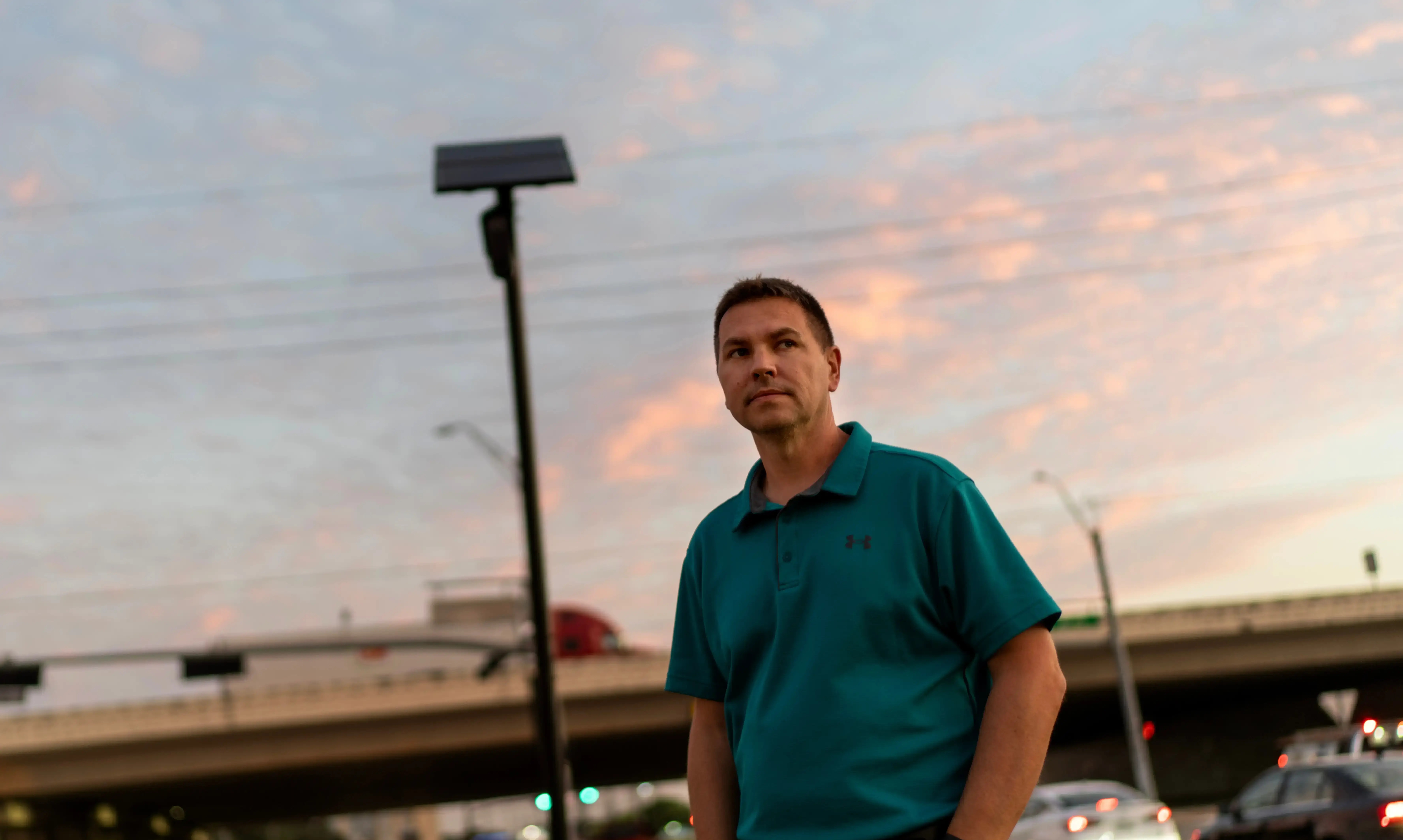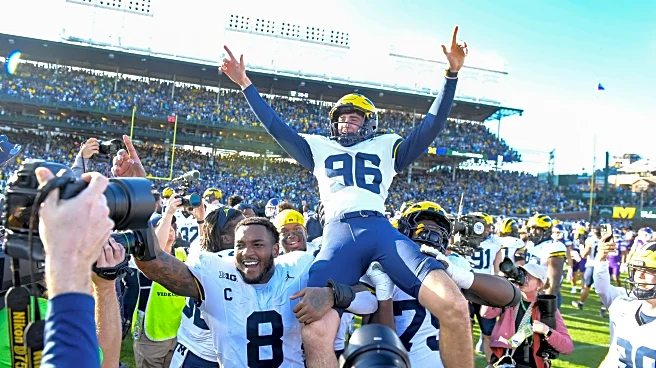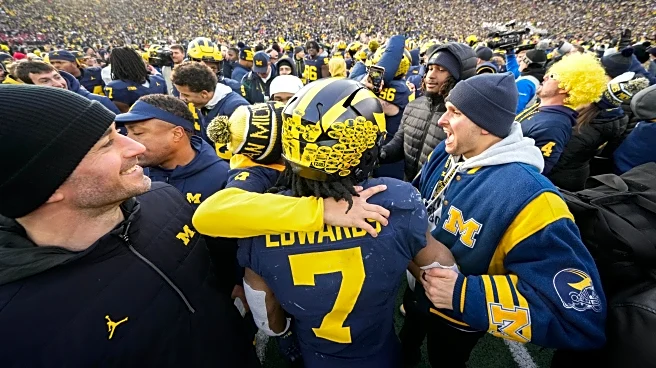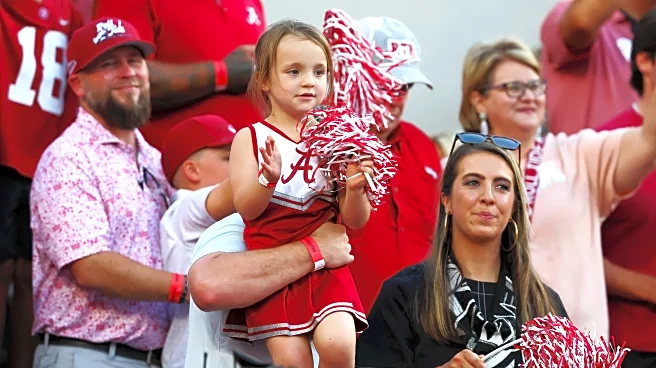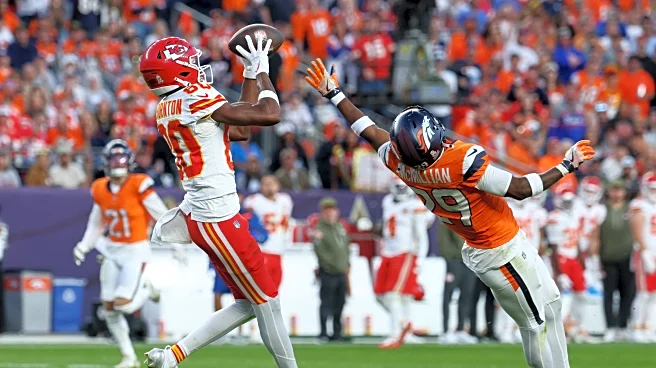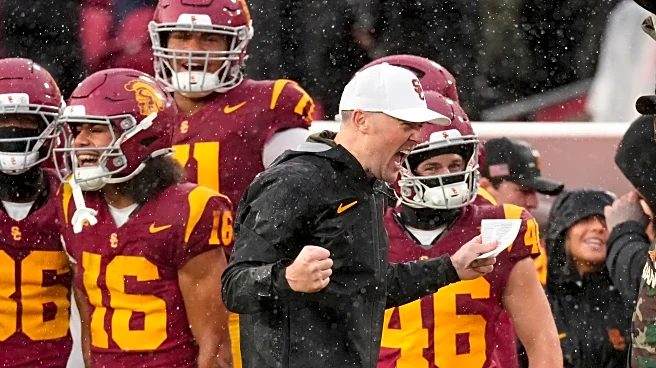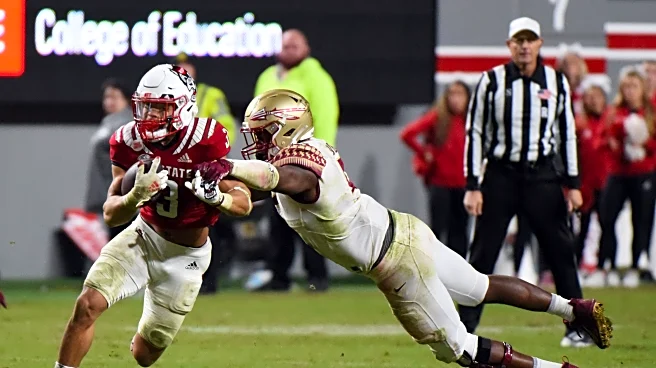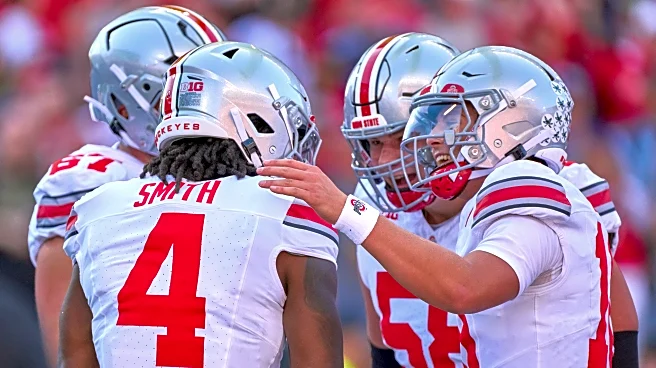Special thanks to Alicia de Artola Castillo of Reign of Troy for joining me to discuss USC’s roster on this week’s podcast:
Offense

I’ve been studying Coach Riley’s unique power-RPO scheme with genuine admiration
for the better part of a decade, back to his time at Oklahoma, and have watched him operate its seemingly mismatched parts with several different permutations of quarterback skillsets and surrounding personnel talent.
Ever since Riley arrived at USC in 2022 — and contrary to the personnel operation he had inherited at Oklahoma — the offensive line play has been subpar for a blueblood, and each year his draw of receiving options that has comprised the tight ends and wideouts might be best described as a pair of aces rather than a full house. Every time Alicia and I have talked, the frustration was palpable because even though the offense would be highly rated, it was still clear how much more was being left on the table, and how prone the offense was to failing at inopportune moments, because of this mismatch between a scheme meant for top talent everywhere and a reality that was incomplete.
Of quarterbacks, the best fit within the structure of Riley’s trademark offense was probably Jalen Hurts in 2018, even though the best overall quarterback he’s had was Caleb Williams. That’s because Williams was the most gifted out-of-structure QB I’ve ever seen … and that’s the whole point: Williams was constantly scrambling and not fully able to take advantage of the benefits of Riley’s scheme, and ultimately the team took more losses than they should have because of these offensive issues.
In this year’s starter, #14 QB Maiava, USC might just have another quarterback who shares Hurts’ capabilities of running Riley’s unique offense, but in a deep irony, Riley’s adaptation to the current strategic environment has been to, in large part, sideline his own scheme. The plays that I’ve attributed over years of study as Riley tentpoles have shrunk to fewer than 10% of meaningful playcalls, while many of the bread-and-butter plays common to most modern college offenses that Riley had previously disdained now make up the majority.
A full strategic map of this choice — the reasons for it, the risks and rewards on both sides, whether it’s a one-year solution or long-term, how it might affect personnel selection going forward — is beyond the scope of this article and will need to wait for the coming offseason’s preview of the 2026 Trojans.
For now I think the upshot can be summarized as this: while Riley’s trademark power-RPO scheme, filled out with all the right personnel, had an answer for anything a defense might do and was all but unstoppable, the 2025 offense makes singular choices in the run and pass games which are better fits for the actually available personnel but which leave open certain vulnerabilities as well. Although most Big Ten defenses, for their own schematic or athletic reasons, haven’t exploited those vulnerabilities enough to shut down USC, film study makes it clear that every defense has found them at times.
Unlike previous years at USC — particularly 2024 — Riley has pared down the 2025 receiving options to a very short list of the most effective targets. The top two are highly productive returners from last year, juniors #8 WR Lane at 6’4” and #6 WR Lemon at 5’11” – though as Alicia and I discussed on the podcast, their heights don’t perfectly predict them lining up as flanker and slot man and the personnel group is more controlling, with a number of configurations that have them stacked up to the boundary or Lane at the No.2 position with an unused decoy at the No.1 to manipulate gullible defenses.
Joining them this year is the true freshman #16 WR Hines at 6’0”, who’s usually lined up opposite of Lane and on the strongside with the tight end(s). Lane and Lemon’s per-target numbers are other-worldly — a 73.3% success rate and 9.62 adjusted YPT for the former and 62.6% with 11.47 adjusted YPT for the latter — but Hines’ are excellent as well if a notch back at merely (merely!) championship caliber 60% and 8.95 and only 25 targets on the year.
At tight end I think they’re facing a dilemma that’s informed the decision-making this year. Longtime starter #87 TE McRee has resumed the role, and his numbers in both blocking and receiving have continued last season’s incremental improvement that Alicia noted over the Summer with some new coaching. But as she also noted, McRee just isn’t an ideal fit for Riley’s signature triple-option play to the sideline and I think that’s been one of the driving forces in changing up the offense; instead he and the second tight end #85 TE Lyons are releasing on some pretty vanilla seam routes traditional to the position.
The other horn of the dilemma is that the sophomore Lyons grades out as a far more effective passing option than the redshirt senior McRee, despite only getting half the targets – the younger tight end has a 73.7% success rate and 9.41 YPT while the older is barely above water at 52% and — by the standards of this offense — a wasted opportunity cost at just over 8 YPT on what seems to me some vertical range and communications issues.
Alicia noted that, due to some minor temporary injuries to the wideouts and serious injuries to the running backs, we’ve seen a few other WRs during the year as well as a significant change in how the RBs are used in the passing game. At this point what we’ve learned is that throws to any but the main three WRs — Hines, Lane, Lemon — have far lower effectiveness, and the backs who are currently available are only being used as checkdowns and last-resort dumpoffs, not really planned parts of the passing game as they were in previous iterations of Riley’s offense.
Watching film it’s been quite clear that Maiava has a plan for where to go with the ball pre-snap, and because of the athletic gifts of his primary options compared to the coverage they’ve faced he can trust them to simply win the route – he stands tall and delivers with accuracy to his first read at championship rates.
The vulnerability in the 2025 passing game, obvious on tape and backed up by statistical regression, is pressure – the offensive line is more or less constantly letting it through, and if the defense somehow takes the first read away then Maiava will need to break the pocket and find something else. While Maiava can still be dangerous on the hoof, the math is unquestionable that every aspect of the passing offense collapses if he can’t target one of the top three WRs or the TE Lyons, and instead needs to go to a different WR, the TE McRee, any RB, or Maiava scrambles with the ball (or for that matter, takes a sack or throws the ball away, but he actually does those things very rarely, he almost always keeps his eyes up and tries something).

Here’s a representative sample of successful passing plays:
(Reminder – you can use the button in the lower right corner to control playback speed)
- :00 – Accurate ball lofted over the WILL into the hole in zone and Lyons has the ability to go up for it and secure it physically; the MIKE gets his leverage wrong post-snap but you can watch Maiava’s helmet, he knows he’s throwing this already. There’s no time for anyone else in the progression, the only pass rusher of the three who’s not getting doubled is getting past the LT inside.
- :28 – The simulated pressure instantly gets through the pull-protection as neither the LT nor the RB know what to do and the RG is just beat, but Maiava pulls off one of his Houdini acts and snaps his eyes back downfield after the spin for the throw. The defense has lost its keys on the scramble drill – the corner doesn’t bail out and the safety is staring in the backfield, and Hines is wide open on the sideline for the unnervingly accurate prayer ball.
- :54 – No pressure this time, Maiava just expects Lane not to bend his route so dramatically one way then the other so the throw is pretty wide. It’s not necessary, the CB’s hips are all wrong so Lane is wide open off the break, but it’s an impressive catch nonetheless and typical of his fantastic hands and smooth change of direction.
- 1:16 – Maiava simply has no doubt at all that Lemon is going to dust the nickelback and defeat the Iowa method of pass defense, which he did all game.
And unsuccessful passing plays:
- :00 – Because of the down & distance this is one of the few plays Illinois was not stupid enough to bite on the run fake, so they layer the coverage on Lemon and successfully take away the first read. The three-man rush therefore has gotten home and flushed Maiava. He dumps it off (late, across his body, but of course gets away with it) to the RB but this is a win for the defense, it’s only six yards.
- :30 – The defense isn’t ready for the snap, still getting the signal in and half the DBs out of position, but they still get pressure through and force an immediate throw to Hines, who was the only guy Maiava had eyes for. Hines is locked up by the corner and the long throw gives the misaligned safety time to make the long run over and help with the break-up.
- :45 – This is also typical of pressure, Maiava will lock into the throw and go for it even though he has no plant space and his mechanics go wonky, making the ball float. It hits the corner in the back, had he been playing the ball, it’s a pick.
- 1:01 – Note Lane and Lemon together to the boundary out of empty, the defense had this scouted and put their resources to this side, getting a sack out of it earlier by making the QB hold the ball. Same thing here, they hustle to take away the major threats to the shortside knowing the QB will go there under pressure, and the LB gets a swat.
There’s another phenomenon in the passing game which I’ve been documenting with Riley for the last five seasons of charting, which is that about five possessions into the game his run-pass balance — which typically starts out pretty neutral and this year had even tipped in favor of the run in the early game — begins to skew much more heavily to the pass regardless of game state. That is, whether the team is ahead, behind, sitting on a lead, needs to catch up, should run out the final few minutes of the half to ice the opponent out of an extra possession, or anything else, Riley starts calling passes more and more often. Alicia has told me she’s noticed the same thing and framed it as needing to learn how to close games out.
When I brought up a specific outcome that’s happened almost like clockwork in the 3rd quarters this year starting in week 5 (when their games have all become competitive past halftime), Alicia guessed what I meant before I said it – that the passing game gets more frantic, Maiava begins to press, and they throw an interception. It’s happened once a game, every week – a couple plays into the fifth possession, partway into the third quarter, the teams within two scores (against Northwestern it happened early, and against Iowa the play it “should” have happened on his arm was hit as he released and the ball tumbled loose … saved by a near-fumble, ironically), and Maiava just loses track of a defender and throws the ball right to him:
There are a few interrelated factors have changed up the rushing offense in 2025: at the beginning of the season I believe Riley made a realistic re-assessment of what his offensive line blocking at USC can do vis-a-vis what Big Ten defenses will fall for, and he radically increased the balance of outside zone running away from the core gap schemes and explosive inside runs that had dominated his prior playbook. I think this decision was accelerated when both of the top two backs, #2 RB Jordan and #1 RB Sanders, were hurt during the week 7 game against Michigan (Alicia told me neither is expected to play anytime soon), and the offensive line has gone through quite a few injury-based reshuffles.
Astonishingly, walk-on (though rated a low 3-star at .82 by 24/7 in the 2024 cycle) #30 RB Ki. Miller has carried the load as the third back and now starter remarkably well, losing only about seven points of efficiency vs the injured starters and almost none of the adjusted YPC – he’s coming in at 52.9% success and 5.9 YPC. Alicia told me that the fourth back, now second, #21 RB Jackson, was brought in to be a short-yardage power back, and his carries are skewed more towards the goalline, but necessity has meant he’s now getting most of his touches on standard downs as relief for Miller and his per-carry numbers are simply much weaker than the rest of the unit, 43.5% success and 4.26 YPC.
The intended starting offensive line (and not even counting DJ Wingfield, a Purdue transfer whom Alicia and I expected over the Summer to start given an extra year of Juco-based eligibility but who had the rug pulled out at the last minute and hasn’t been available) has been returning starters #72 LT Paige and #77 RG Noa, returning backup who got quite a bit of play at tackle last year #73 LG Raymond, and #67 C O’Connor and #74 RT Tauanuu who debuted in last year’s bowl game.
However, Paige has been hurt repeatedly last year and this year. That’s caused some significant changes along the line, as they kicked out Raymond from guard to tackle to deal with it (they’ve had Raymond and Tauanuu try out left / right and right / left in multiple games, and settled on Raymond at LT). That, plus an independent couple of missed-time situations for Noa, required a new guard to come in at different points, which for several games had been #59 OG Banuelos, but more recently has been #60 OT Ka. Miller (brother of the RB and also currently a walk-on, though Alicia said both brothers are set to get scholarships shortly). Furthermore, O’Connor has also missed time and been replaced by Syracuse transfer #50 C Reed – itself a surprise, as O’Connor is a walk-on and Reed a longtime starter, but Alicia told me O’Connor beat Reed out in camp.
Evidently the situation for Saturday is that Paige probably will not play, Raymond will go in at LT, I would expect Miller to fill in at LG, and Noa and Tauanuu to continue on the right side. Alicia said that O’Connor wasn’t at 100% last week against Iowa but Reed had a worse injury so O’Connor was forced to play, but now O’Connor is back to full health (or so it seems) and is expected to play on Saturday.
Miller has been a pleasant surprise, he’s graded out almost perfectly though in a pretty limited number of reps so the confidence interval is low. Just about everyone else on my tally sheet is pretty tragic, whether because of the constant injury shuffling or just lack of development is hard to say. I’m most confident in the very poor grades for Noa, that’s been highly consistent for multiple years and he’s been least affected by substitutions, while I think Tauanuu has a bright future as a redshirt freshman but I see footwork and leverage issues that are fairly common to young tackles with him.
Like the passing game, the change in the rushing offense has been to a nearly singular form of attack and away from the multiplicity of fascinating schematic options that kept sophisticated defenses (and film reviewers) up nights. The upside for the Trojans is that this approach requires winning far fewer aspects or subcomponents of the play in order to be successful … and Big Ten defenses have tended to be very cooperative in biting on the the key manipulation and getting themselves sealed by the one or two key blocks that are all USC needs to pull these runs off.
The downside to the situation, schematic and personnel both, is that inside rush effectiveness has diminished significantly. Alicia agreed with my assessment on film that the most important thing that unfortunately the Trojans have lost with Jordan and Sanders is their ability to “muscle up” runs through contact when the blocking isn’t really there, and that for as effective as Miller is at the main thing he’s asked to do, he tends to go down right away on first contact which explains most of the gap in his efficiency score. This means that if defenses can suss out the run design and shut down the one main effective play type with minimal personnel — and not bite on what’ll be an ineffective run up the middle regardless of resources committed — they can recoup their investment and allocate elsewhere.
Here’s a representative sample of successful carries by Jackson and Miller:
- :00 – Here’s Jackson in the opener, as Alicia said in his intended role as a goalline back. With seven blockers to keep the edge pressure off as the backers rotate around, he shuffles patiently for the A-gap to open.
- :10 – Get used to seeing this – the backside end sets the edge so Maiava hands off, something about the initial pathing makes the frontside end and both backers think inside run, and now USC just needs to pull off two blocks – the RG pull needs to stun the end while he’s still mystified by the play, and the TE needs to seal the backer who’s already given up leverage. Note the safety instantly ending the play without needing to wrap up.
- :24 – This was the biggest outlier game of the year, Maiava had an off game making reads (Alicia called it “psychosis”) but the rushing attack dominated. I think a large part was the defensive structure, even this o-line will have a blocking advantage 6-on-3 running downhill on the backers in a gap scheme.
- :31 – By this point in the season I have nearly shouted myself hoarse at the Big Ten defenses on my screen that it’s never going to be an inside run and to quit biting on the corny counter step, which gets the DE and both LBs to punch the same C-gap – the blocking is kind of gross on the edge but a traffic jam is all they need. For some reason they never listen.
And unsuccessful carries:
- :00 – Here’s a play with Miller carrying the ball from earlier in the season, when USC was more confident they could pull off inside running with their entire stable of backs. Nope, the entire left side of the line has no idea what their assignments are while the right side does but they lose all of them, and Miller generates no yards after contact.
- :13 – Against Notre Dame, USC generated nothing on the ground — 33% rushing success, 2.78 YPC, 4.2% explosiveness — because the Irish knew how to beat USC’s outside zone game. The end remains head-up on the pulling guard and keeps his leverage, the DBs contain the edge, the frontside backer gets through the TE, and the backside backer stays out of the trash and scrapes over.
- :23 – Despite 12-personnel, NU is playing it light – they know they just need to beat the puller and scrape the backers around. Jackson is in for this play but nothing doing, no extra yardage for the power back in outside zone.
- :37 – Checking in with the inside run game – still nothing, there’s a miscommunication on the run lane, the RT gets creamed, the RG loses control so the back cuts away from the center’s lead block to the vacated gap where the LT was supposed to have gotten up to the backer but he’s late and falls down. Miller gets corkscrewed from opposite ends by the guys the tackles have given up, trying to run up the middle.
Defense

Before the end of the 2023 season, Riley fired DC Alex Grinch, one of the few coordinators I can document analytically as actively making his squad worse (this is much rarer than fans might think, most ineffective coaches simply fail to add value to the baseline talent of their players, but Grinch was … exceptional). The replacement since 2024 has been DC Lynn, and as expected simply from eliminating the artificial suppression of talent, bringing in a shot-in-the-arm group of senior transfers, and cleaning up the appalling sloppiness at nearly every position, the defense got off the mat last year.
As Alicia and I discussed over the Summer, those improvements were the low-hanging fruit, and the question for sustaining and building on them in 2025 would be whether Lynn and his new staff could do the tougher work ahead. That amounted to getting stouter at defensive tackle, generating more havoc at defensive end, fielding reliable linebackers for the first time in a decade, and reloading and expanding the secondary. Each of these things would mean more internal development and more selective, judicious use of the transfer portal.
After charting all of USC’s games this season, I see no evidence that any of the questions about the Trojans’ defense under Lynn have been answered positively. In fact, in all six of the fundamental metrics I track from charting, USC’s defense in 2025 has performed slightly worse than the one in 2023 which got Grinch fired.
I have no idea why F+ advanced statistics has USC’s defense ranked at 46th; my analytical model has them closer to 95th. There are only two situational components in which the Trojans perform any better on my charts in 2025 compared to 2023 (when F+ ranked then at 97th, and opponent adjustments should have resolved these factors but I will discuss them anyway as they’re strategically appropriate). Those areas are a five-percentage point improvement in preventing 3rd & long conversions, up from 70% to 75%, and a huge jump in pass defense (though not at all in rush defense) on 2nd & short, from 15% to 77%.
Both of these factors are entirely explained by switching conferences from the Pac-12 to the Big Ten. Differential background pass conversion rates on 3rd downs for opposing offenses are a perfect match and should have been neutralized algorithmically, though nevertheless 75% for 3rd & long is a pretty decent number and the Trojans should be noted as being effective at getting off the field if they can get the opponent behind the chains.
For 2nd & short, this reflects a bewildering and flat-out incorrect league preference for running or screen passing for premature conversions and so the Trojans in 2025 simply have not faced more than a handful of deepshot attempts in the “money down” situation, whereas Pac-12 teams knew what they were about and successfully challenged them all the time (Big Ten offensive coordinators would not understand the fundamentals of game theory, resonant sequencing, or periodic functions if I beat them over the head with von Neumann’s collected works).
On the podcast, Alicia brought up an interesting phenomenon that’s arisen in the last few weeks, which is a demonstrable uptick in defensive performance during the second halves of games. I’d found the same general trend during my charting and did a quick database query while we were talking, though at the time I neglected some important data controls which a comment of hers about her partner Michael’s yardage sample reminded me to do.
After getting rid of games where garbage time makes the comparison moot, controlling for field position effects, and allowing for the skew in the 2nd half gameplan from Nebraska after their starting QB was injured shortly after halftime, the upshot is that the effect is real, but is fairly tempered. Here’s what, in this analyst’s opinion, the properly controlled data look like for the games in which we can make fair comparisons:

So the run defense improves in all metrics after halftime, although it’s from absolutely horrible to merely substantially below average, while the pass defense gets a couple of percentage points better on an efficiency basis but worse on an explosiveness basis, resulting in more yards surrendered on the fewer passes that do connect. From looking at the playcall balance, what this looks like narratively is that these are all competitive games that the Trojans have been winning (even their two losses, USC had late 2nd-half leads) and opponents have been throwing the ball more often and deeper, while reserving runs for high-stakes, shorter yardage moments.
Exogenous factors — being caught off guard by an unexpected opponent game plan, some weird turnover luck, injuries — have made this effect more dramatic on the scoreboard, but on the fundamentals this seems to me just to be a natural outgrowth of game states caused by USC’s dominant offensive posture, not really a defensive 2nd half renaissance.
Fundamentally, there’s simply nothing that the Trojans do well on defense in relation to their extant opponents — that is, they don’t make Big Ten offenses do poorly at anything Big Ten offenses don’t already do poorly — and in some things, like dealing with 1st down efficiency passing and surrendering explosive rushing, they’ve managed to make awful Big Ten offenses somehow look good.
The most confusing thing about USC’s defensive personnel are their choices on the defensive line. The four tackles in the rotation have been Kentucky transfer #9 DT Silver, journeyman #8 DT Thompkins, true sophomore #97 DT Abasiri, and true freshman #4 DT Stewart. The core problem is size – only Silver is actually big enough to creditably play 1-tech in their four-down front, and as Alicia put it, he’s not particularly impactful (though I think he’s better than any of the alternatives who come in at over 300 lbs).
Thompkins is a converted defensive end who’d be an acceptable backup for his experience but we’ve agreed for the last two years isn’t starter material at USC. Abasiri probably has a bright future as a 3-tech but he’s just too young and undersized at this point to helpfully contribute right now, and Stewart is completely baffling as he’s a 5-star defensive end but totally ineffective at tackle (I have him at 10% grades on his reps, lowest of any primary rotational tackle in the league).
I’ve seen four other big tackles play a handful of snaps this year: #94 DT Pepe, who’s not very effective but would probably be more useful at 340lbs than a rotation made up of three guys playing 3-tech (longtime listeners surely snickered when Alicia called me a “Kobe Pepe stan” for suggesting this), freshmen #92 DT C. Jones and #88 DT Boucard who I’ve seen playing 0-tech in their 5-2-4 configuration, and a little bit of Georgia transfer #0 DT Jarrett though he still needs to reform his body before he’s down to playable weight.
Alicia had some further unfortunate news on the podcast – Silver and Jarrett, the two biggest tackles, are both injured and there’s no indication either will be available on Saturday. If they don’t have Silver I would expect they’d pull Pepe into the lineup, but then just they’re back where they started, with a single 1-tech and too many 3-techs, and a less effective nose at that.
It’s especially baffling to have switched Stewart from end to tackle when they have a number of freshmen tackles to develop, and evidently only three ends they trust to play (and this was after an offseason with a very puzzling set of transfers and retentions including an end who’s changed to an unused linebacker, but I will save that discussion for the offseason as I was already close to conniptions about the linemen who are playing).
Those ends are #6 DE Lucas, #10 DE Shelby, and #1 DE Crawford (previously known as Fountain, but he’s changed his last name this Fall). All are returners from last year’s rotation, Lucas as the eldest though he missed much of last year with an injury. In 2025, Lucas and Shelby have been going in first, and Crawford has rotated in behind them. The issue with this unit, other than being short-handed by one from the typical four-man rotation for ends and it’s clear fatigue sets in with them, is that none of them are generating havoc stats — beyond sacks and TFLs, I tally QB pressures, RB redirects, pass deflections, and other forms of clear play disruption from charting — at even nominal rates for their positions, and the lowest on a per-rep basis is Lucas. A rational reorg would have Crawford starting and Lucas backing him up.
The best news for the defense is that starter #18 LB Gentry has stayed healthy all season, something that hasn’t happened in four years since his debut at Arizona State in 2021. His grades on my tally sheet are just average for a Big Ten linebacker, but his highly unsual size for the position at 6’6” presents some unique challenges for offenses – Gentry is basically impossible to throw over when defending midfield, and the long leverage of his arms makes his tackles very difficult to break.
The other starter in the two-LB configuration (they’ve been playing out of a 4-2-5 most of the time, though last week against Iowa they played a lot of 4-3 and 5-2-4 even as the Hawkeyes passed quite a bit from 11-pers, for reasons that are hard to disentangle) is true sophomore #23 LB Stephens, as expected since last year it was clear they were grooming him for the spot.
The surprise has been the third backer, #31 LB Walker, who’s also a 2024 recruit but didn’t play at all last year. Walker is both the SAM who comes in for the 4-3 and also the backup to Gentry or Stephens when they need a break (none of the LBs uses the green dot helmet, that’s a DB, though that DB is hurt … a complicated situation). Evidently Walker beat out #14 LB Robinson, who transferred in from Penn State and it seemed clear to multiple observers was specifically brought in for the job and was going to be PSU’s starter before he left (perhaps he’s blown up two programs). We’ve basically seen none of Robinson this year despite him being healthy according to Alicia, though we also haven’t seen another expected contributor #15 LB Beavers since he’s hurt. That effectively means USC only has three playable linebackers, and two are very young.
When I asked Alicia for her assessment of the unit, her response was that it was like watching a squad with 10 players on it. I know what she meant, Stephens and Walker are simply not very effective at this point in their physical development or play recognition. This isn’t a big surprise and I think Alicia is right that it’s not really an issue with those guys themselves, but that USC lacks the older and more effective backers who should be starting over them while they develop as understudies.
Here’s a representative sample of successful rush defenses:
- :00 – I thought this was a early register of where all the relative strengths were in the interior front in their 5-2 look. Thompkins wins one-on-one with the RG, Silver gets cleared out by the C but eventually fights his way back to the play, Abasiri wins against the LT but gets chipped by hard enough by the H-back that he can’t help. Stephens gets mauled by the LG at the 2nd level, while Gentry just wraps up and spins the back down for the tackle.
- :11 – USC is sending everyone around the backside of a run play, while Silver and Crawford are getting spaced out by single blocks to allow two linemen to pull through, this should be a big run, but then in perhaps the most Purdue play I’ve ever seen the RG throws Stephens into his running back for what was his most effective tackle of the day.
- :23 – Here’s Nebraska running on 1st & 20 because of course they are. Pepe is big enough to play 1-tech (note that for later, it’s not two 3-techs) which causes the center to chip him and so Gentry has time to keep playside leverage. The back can’t find the gap and Thompkins is controlling the RG’s other shoulder.
- :38 – Note that USC is in 4-3 against Iowa’s 11-personnel, they stayed heavy against light until just before halftime. That’s the freshman Boucard at 1-tech, not doing bad against the backup LG. Stephens is crashing and getting inside against Iowa’s undersized RG, spilling the run outside. Lucas has completely overpenetrated, he’s treating this standard down like it’s a passing down and totally neglected to set the edge, but Walker does a nice job getting off the center’s block and doing Lucas’s job for him.
And unsuccessful rush defenses:
- :00 – I don’t know what Gentry is doing here, as motion reveals his man is the TE not the back so he’s out of structure crashing. Stephens, whose man is the back, is not kept clean by Silver and he gets pick & rolled by the WR. Bad angle by the safety, the trigonometric intersect is the 43 so he gives up nine unnecessary yards running a J-curve.
- :28 – Now that’s how Jonathan Smith runs the counter. Note Abasiri turning his shoulders perpendicular to the line of scrimmage and losing any ability to stay in the play. Stephens stays square to his credit but rather than wrapping up goes for the peanut punch against a high and tight ball with five points of contact.
- :51 – I don’t understand why USC keeps deploying this double 3-tech look (actually more like 4s) from their 4-3 with nobody over the center. The A-gap responsibilities go to the backers who are then stuck and helpless to do anything about the play the instant one of the undersized linemen gets waxed. Meanwhile, Gentry is required to cycle over to set the edge because Lucas won’t, so now the interior is wide open.
- 1:13 – Still in the 4-3, Iowa’s decided to go right through it. Motioning the TE into unbalanced to the field pulls Gentry out of the box, and the line just annihilates the front – the C-RG combo forklifts Silver into Walker and takes both of them back 10 yards and into the safety, while Boucard can’t stop the LG from getting up to Stephens.
In 2024, the new defensive staff reformed the secondary by forming a very tight rotation of eight guys: five starters they tried to play all the time plus one backup they were comfortable with, two more they’d go to when they had to, and then tracking the rotations carefully it became clear there was a whole host of players beyond those eight whom the staff were strenuously avoiding playing during meaningful time. Furthermore, their preferred secondary players were made up almost entirely of new transfers (three starters and the one comfortable backup) or returning players but promoted or switched over to prominent roles (the two other starters).
For the 2025 season, there were departures by seven of the eight players in that tight 2024 rotation the new staff had created, to the NFL, graduation, or the transfer portal. The only returner of the group was #7 DB Ramsey, who at this point has played nickelback and deep safety (I can’t tell if he’s the field or boundary safety, and Alicia told me she’s stumped too about what the safety structure actually is), and wears the green dot helmet. However, Ramsey missed most of the Iowa game last week with an injury, and his return on Saturday is questionable.
The other two safeties we’ve seen have been North Carolina State transfer #19 DB Fitzgerald and #24 DB Pierce, who was a garbage-time only player last year. We’ve also seen some of Notre Dame transfer #28 DB Urlacher in something like a specialist box safety role (mostly I have him charted hitting people rather than in coverage), and then too few meaningful reps for any evaluation on four freshmen: #30 DB Gallegos, #27 DB Graham, #41 DB Reddick, and #38 DB Rubin.
Alicia told me that Fitzgerald was hurt at the very end of the Iowa game, and the reporting she’s received is that he’s even farther from returning to action than Ramsey is. She pegs the likely order of replacements as Urlacher first, then Reddick or Graham (the latter has been hurt recently but I saw him in action a bit last week), and Gallegos and Rubin least likely.
The mystery has been #16 CB P. Brown, a player it was very clear the staff avoided playing at all costs last year, then Alicia surprised me by saying was the lead in camp to win the nickel job until he was hurt, but then that injury was only supposed to last a month and yet he still hasn’t been seen all year. Alicia said she hasn’t heard anything about Brown this week even with all the injury news, but perhaps this will be the week for his redemption.
I don’t think USC has gotten a lot of good news at cornerback. It seemed they pulled out a lot of stops to get #21 CB C. Johnson from UCF to transfer, but he’s been injured all season. They also went hard after San Jose State transfer #2 CB Harvey, but early games showed he was completely ineffective, then he got hurt too. They’ve played #17 CB Nicholson, a Mississippi State transfer they brought in last year but didn’t play then, as well as redshirt freshmen #25 CB M. Williams and #22 CB Conley.
Conley hit the pine after some very poor play at the beginning of the year, but Nicholson got banged up in week 11 against Northwestern so Conley came back in, and then Conley started against Iowa though Nicholson rotated in as well. At this point it appears, like the linebackers, that they only have three playable guys and two are very young, none with very appealing grades on my tally sheet.
Here’s a representative sample of successfully defended passing plays:
- :00 – Very aggressive posture on 3rd down in the redzone, crowding the line and blitzing (backing out Silver and Abasiri to midfield against gadgets). Ramsey’s speed is obvious off the left side and Lucas finally gets a hurry beating a TE and RB who are out to lunch worried about all the extra bodies. Pierce is effectively rubbed but this pass was never close because of the pressure.
- :24 – 3rd & long blitz gets the young QB to drop his eyes. The much lower center of gravity for the back is actually an advantage picking up Gentry, though this would be called as a takedown hold by the LT against Lucas in a sanely officiated league, while Abasiri is bunny-hopping the center. Shelby is actually controlling the backdoor, so the solution is to gain some depth and hit the Z once the slot has pulled off all the safeties and Graham is firing onto the TE, but instead the QB tries a break for it through the frontdoor. On 3rd & 17.
- :47 – This has a higher success rate on my tally sheet, though USC attempts it less often – dropping eight into coverage and deploying one of the more slightly built DTs, Abasiri here, wide of the offensive tackle as the outside man with his fist down on the line of scrimmage (otherwise known as an end, hmm).
- 1:06 – After not having a lot of luck playing man, USC switched to a pretty gooey zone and delayed the QB’s decision-making for some pressure to start getting to him, Crawford embarrassing the RT here. The result is a dumpoff to the back which Nicholson handles.
And unsuccessfully defended passes:
- :00 – 11-pers with a slip of a wideout moonlighting as an H-back in short yardage gets USC to put nine in the box and play cover-0, with Conley and Fitzgerald against Southern’s two top targets. Conley’s hips are wrong against the crosser and it might have been worth a shot if Fitzgerald weren’t cooked and committing PI.
- :26 – Ramsey’s in the box but out of the throwing lane on the RPO. Williams and Pierce combine for the best knockout rub I’ve ever seen. Fitzgerald breaks down improperly.
- :48 – Nicholson doesn’t know if he or Walker has the curl/flat in this coverage (it’s Walker) so he’s not in the lane to deter the throw to the X-receiver. Pierce’s tackling leverage is correct, playing this outside-in (don’t let him get to the sideline), he just whiffs from breaking down too early.
- 1:19 – Deep drop, no pressure from Fitzgerald’s safety blitz, and with Ramsey needed in man and Pierce on the TE crosser, there’s no help for Conley down the sideline. He loses the battle with their hands but fights on to trip up the receiver.


